#27 April 1813
Photo

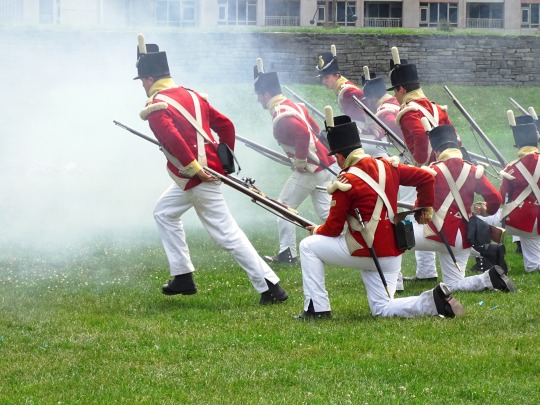







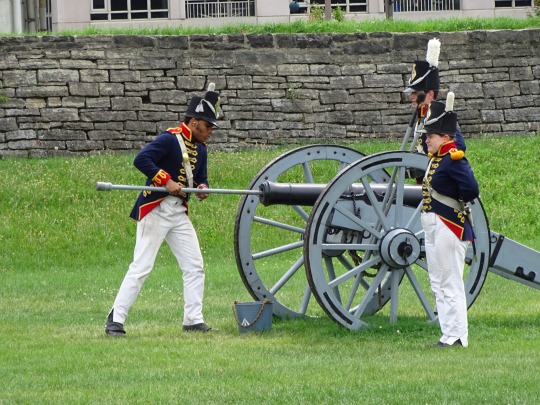
War of 1812: American troops captured York, the capital of Upper Canada, in the Battle of York on April 27, 1813.
#Fort York National Historic Site#Fort York Squad#historical reenactment#travel#Toronto#Ontario#Canada#summer 2018#original photography#vacation#Fort York Guard Royal Artillery#6-pounder field gun#War of 1812#US troops#captured#Battle of York#27 April 1813#110th anniversary#US history#Canadian history#architecture#cityscape#tourist attraction#landmark
4 notes
·
View notes
Text
The Bloody Viscount - II
— summary: You had fallen in love with Viscount Bridgerton and he had fallen in love with you. The marriage seemed perfect, but then why did Anthony Bridgerton always come home late and bloodstained?
— gender: yandere, dark!au.
— warnings: obsessive and possessive behavior, murder, kidnapping, angst, fluffy, dub-con (?), possibly smut.
— pairing: yandere!anthony bridgerton x female!reader.
— word count: 1,705.
— tag list: @will-delete-this-later-probably, @cayt0123, @flowercrowns-goodvibes, @czarinera, @remuslupinwifee
— prologue, chapter 1;


Chapter 2
''Viscount Bridgerton was seen dancing with Lady (Y/N) (L/N) at Lady Danbury's ball last night. I have no information on how she had the cunning to attract Lord Bridgerton's attention, yet. He seemed quite enamored with his partner, dare I say. Will we have a Viscountess soon? After all, who better to play the role of viscountess than the diamond of the season?
Chronicles of the Society of Lady Whistledown, April 27, 1813.
''Ah!'' Your mother's scream of happiness was hard to ignore. You were trying to embroider some flowers, but with your mother's constant shouting it was difficult to concentrate.
That's because you were in separate rooms.
''(Y/N)!'' She shouted your name. Sighing, you got up from the couch and placed your unfinished embroidery aside. You smoothed your light blue dress so she wouldn't scold you and went to the dining room.
''Yes, mom?'' You asked as you entered the dining room, where your parents were together. Your father was drinking a cup of tea and your mother had Lady Whistledown's newspaper open.
''Have you read today's Whistledown?''
You shook your head in denial.
''Well then, read it!''
You fight the inner urge to scoff. She always scolded you every time she saw you reading, but you suppressed your words. You sat down on the padded chair and began to read.
What you had read did not please you in the same way it had pleased your mother.
'Isn't this wonderful?'' Your mother looked at your father.
He cleared his throat, ''I suppose.''
She wasn't even listening to his words, ''Our daughter has captivated a viscount! Imagine what this could do for us?'' She rambled.
''Mom...'' You sighed.
''This is perfect! You will be a perfect viscountess.''
You sank into the chair, wanting to hide. She wouldn't listen to you. She never listened. She seemed very happy with the idea of being part of the british aristocracy.

''Lady Whistledown has been writing about you, brother.''
Anthony looked at Benedict who was drinking tea and biscuits. He frowned at him.
''Really?'' Anthony muttered disinterestedly, looking at his gathered family. His mother was sitting on the couch with Hyacinth, Francesca, Gregory and Eloise. Colin and Benedict were beside him.
Damn Whistledown always wrote about him. He just wanted to find out who the damn woman was and choke her.
Until death, preferably.
''Apparently you found your viscountess.'' Benedict teased, sharing a knowing look with Colin.
His mother turned her face towards them the moment the word “Viscountess” left Benedict’s mouth. Anthony mentally cursed him.
Anthony knew who they were talking about and as much as it irritated him, they were telling the truth. He had found his viscountess and was determined to marry her.
Lady (Y/N). She was quite lovely and captivated him in a way no woman ever had. He wanted to make her his wife.
And he would.
''Is it true?'' Colin asked.
Anthony rolled his eyes. Benedict held back a laugh.
''Yes. I'm going to marry Lady (Y/N) (L/N).''
He ignored it when his mother looked at him, curious and shocked. He ignored his brothers' curious looks. All he thought about at that moment was her. Beautiful and wonderful, dressed in white at an altar.
All perfect for him. Perfect for him to ruin.

The park was beautiful and full, as always. Looking around, you saw several debutantes and suitors, with their mothers at their heels. You liked Hyde Park, it was a beautiful and comfortable place.
Well, it tends to be when your mother isn't on your heels.
You loved her. You really loved her. But sometimes you wish you didn't depend on her, that you didn't have to deal with all of this. It's suffocating.
And hearing her talk about the viscount didn't make you excited. And you didn't even like it. He was an attractive man and your dance at Lady Danbury's ball was something special.
You admitted all of this, but...
But you knew how to handle it right. You didn't even know if he was really interested in you. You knew his reputation, how he was a libertine and that didn't make you comfortable at all.
You would like to marry for love, or at least to a gentleman who did not have such a reputation as the viscount possessed. It was unlikely to happen, but you couldn't give up hope.
Sighing, you looked around.
You and your mother were sitting on a picnic blanket spread out on the lush green lawn of Hyde Park. You were sitting between some pillows that had been placed and drinking a glass of lemonade.
Near you were the Featherington's. You waved at Penelope when she looked at you and, seemingly embarrassed, she smiled and waved back.
"So, she said- (Y/N)!" You turned your scared head to your mother, "Are you even listening to what I'm saying?"
No, you weren't.
"I'm sorry mom."
She rolled her eyes, "As I was saying..." You didn't even bother to listen to her. You looked over at the Featherington's and saw Miss Eloise Bridgerton talking to Penelope.
You didn't pay much attention.
Until you heard that voice. That damn voice that haunted your dreams last night.
"Lady (Y/N) (L/N)."
You stood up quickly, smoothing down your dress. You gave a small curtsy, "Lord Bridgerton."
He looked impeccable as always. You couldn’t help but blush at the intensity of his gaze on you. You felt your body tremble a little when he took your hand and kissed your right hand, gently and kind.
"Lord Bridgerton!" Your mother quickly stood up and greeted him.
"Lady (Y/M) (L/N)." Anthony took your mother's gloved hand and gave it a polite kiss.
"It's a pleasure to see you here."
"My mother insisted that I accompany her." He replied.
"Oh, is Lady Violet here?"
Anthony nodded, "She's right there." He pointed out to his mother that he was talking to Lady Danbury.
"I see." Your mother muttered, looking at the two women vehemently.
"I would like to ask your permission to walk with Lady (Y/N)." You choked on his words.
Your mother's eyes perked up.
"Of course. (Y/N) would love to walk a bit."
You mentally rolled your eyes. But your mother's reprimanding look made you stiff.
Anthony reached his arm out to you and without much of a choice, you hooked his arm with yours.
You tried to ignore the shiver the contact brought you.
With your mother in the behind, you and the viscount began walking through the park in silence at first.
"Does my presence make you uncomfortable?" He asked suddenly.
You shook your head quickly.
"No. It's not that. I just... I get lost in my thoughts sometimes." Your words were not lies.
"Good." That's all he said.
You kept your attention on the flowers and trees in front of you. All very beautiful, well-groomed and full of life.
"It's very beautiful, isn't it?" You murmured to a small bed of roses.
Anthony followed your gaze and nodded.
"Do you like flowers?" You knew it was probably a silly question to ask a man, but you didn't care.
Anything was better than the silence that had become uncomfortable.
"I have nothing against them." You laughed a little. He smiled and continued, "But I think hyacinths are beautiful."
"They are."
Anthony let go of your hand and went to a white rose bush, he picked up the flower and removed its thorns. You looked at him confused, until he handed you the rose.
You felt your heart speed up at such a gesture. It was the first time you received flowers from someone and you never realized how much you wanted flowers until you received them.
"T-Thank you, Lord Bridgerton."
"Lady (Y/N)." He took on a serious tone and you were alarmed, "You can call me Anthony."
"That wouldn't be appropriate..."
When he approached you and touched your free hand, your breathing became heavy. This was wrong. You shouldn't be this close.
"I think I've made my intentions pretty clear." He whispered, looking straight into your eyes. "I believe I've made it clear that I want to court you."
You couldn't respond.
"I want you to call me Anthony..." He murmured, his breath very close to your face, "Because I want to become your husband."
You weren’t sure if you could breathe.
''I...'' You swallowed, pulling away a little.
Anthony frowned but didn't protest.
You coughed and squeezed the rose a little tighter.
"I think we need to go back."
He watched you like a predator watched its prey. He remained silent for a few minutes before nodding.
"Of course. It's getting late." He offered you his arm and you took it.
The walk back to where your mothers were was silent and under the watchful eyes of other people.
You just wanted to lie down and not have to deal with the interrogation your mother would do later.

Anthony couldn't sleep.
He tried and tried. He changed position several times, but sleep never came.
His mind was stuck on you.
How he had touched you. Even though it wasn't a direct touch, due to the glove you were wearing, he still thought.
He thought about what it would be like to slip on that glove and feel your skin against his.
Anthony tried to fight the feelings, the desires that were growing but he couldn't. All he found himself thinking about was kissing you, tasting your skin and touching you in places you had never been touched.
So pure. So inocent. So virginal.
His. His perfect diamond.
It was these thoughts that brought him to climax in the silent and lonely night in his room.
He caressed himself thinking about what you would look like under those dresses, the expressions you would make when he was inside you. How you would moan his name when you reached your own climax.
It was these thoughts, these mental images that caused him to moan your name like a prayer as he released himself into his hand, making it dirty.
Anthony closed his eyes, breathing deeply.
He needed to marry you soon.

— lady l: What did you think of the chapter? I hope you liked it, I'm sorry for the delay and any errors there were! Feel free to give me your feeback. Drink water and I love you you all! ❤️
#bridgerton#the bridgertons#yandere bridgerton#yandere the bridgertons#yandere anthony bridgerton#yandere anthony bridgerton x reader#the bloody viscount#anthony bridgerton x reader#long fic#fanfic
565 notes
·
View notes
Text
Bessières's correspondence
This is for @flowwochair: the index of the documents in the "Fonds Maréchal Bessières" in the French National Archives. Not much about the content, unfortunately. I summarised some points that I imagined were not all that interesting to you. Please let me know if there is something you'd want to have more details on and I will look if there is more.
1) Letters and orders by Napoleon to Bessières, dating from 1796 to 1813. It’s organized by the different armies and contains mostly »official« stuff of some importance, like documents related to the double abdication of the two Spanish Bourbon kings in 1808. Murat’s name is mentioned once, in connection with one document:
copies of Napoleon's instructions to Murat on how to deal with the Spanish, 17 and 28 April 1808
Maybe also of interest: some of the documents concern the reorganisation of the troops after the Russian campaign and date as late as mid and end-April 1813, so only days before his death
2) Letters from princes of the imperial family to Bessières
Mostly interesting because a large chunk seems to be labeled »a.s.«, which I believe to mean »autographe signée«, i.e., handwritten and signed. Most correspondence of important people would have been in the hands of secretaries, with the sender merely signing them. Bessières being worthy of receiving letters that these imperial princes had written themselves hints at a special position of trust.
41 letters from Joseph Bonaparte, related to events in Spain (1808 – 1811)
2 letters (not written by Jerome himself) about uprisings in Kassel in 1813
And here you go: 29 letters by Murat, in his own handwriting, relating to the daily report on the Guard, the policy to be followed, and to military events in Spain (dated 5 August 1805 to 5 June 1808)
Followed by some stuff for me: 22 letters from Eugène de Beauharnais, in his own handwriting and »d’un caractère surtout personnel« (of primarily private nature), dated 27 January 1805 - 5 June 1808
Other than that, there are letters from Josephine, Lebrun, Hortense, Stéphanie de Beauharnais, Méneval and the secretary of Madame Mère.
The rest of this section are documents related to Bessières’s military career, decorations etc.
3) Some personal letters. The connection between them escapes me
from Bessières to his sister-in-law (?), 22 February 1808.
from Bessières to a marshal on the reorganisation of the Guard, 27 January 1813.
from Madame la Maréchale concerning her financial distress, 12 December 1813 and 12 December 1814.
Facsimile of a letter from the Marshal to his wife, after his departure for the 1813 campaign
4) Certificates, letters of service and appointment, decorations
Some documents as early as 1792 among them, but mostly bits and bobs that seem unrelated
5) Letters adressed to Bessières – Army of Italy and Army of Egypt. 55 pieces
6) Ministers' reports to the Emperor and various letters. Plenty of documents and letters among them that are neither written by or adressed at Bessières
7) Imperial Guard I (Organisation, financial reports etc.)
8) Imperial Guard II (contains one more letter by Eugène!)
9) Imperial Guard III (Holland in 1810)
10) Legion of Honour and pay. 73 pieces, 1804 to 1813
11) Russia. Letters adressed to Bessières, situation reports, mostly from before the campaign started
12) Letters from Napoleon, the imperial family, the royal family and several famous personalities. A lot of them obviously from after Bessières’s death, among them (condolation) letters to Madame la Maréchale from
Napoleon - 6 May 1813
Madame Mère – 7 May 1813
Marie Louise – 5 May 1813
Caroline Murat – 25 May 1813
Eugène Beauharnais – 2 June 1813
Joachim Murat – 8 June 1813
Also contains 18 letters from Hortense de Beauharnais to Madame la Maréchale, dated 1809 to 1813, letters from Madame la Maréchale Oudinot, from Laure Junot, from Wellington (handwritten!) and plenty more
And on a happier note: a letter by Joachim Murat dated 1 Germinal year VIII (22 March 1800)
13) Related to Bessières’s city house
14) Correspondence between Marshal Bessières and Madame la Maréchale I
3 letters from Bessières to his wife, 2 prairial-15 vendémiaire an XIV (22 January-7 October 1805)
75 letters of Madame la Maréchale to Bessières, found in the cassette of the marshal after his death, 5 January 1806-1 May 1807
29 letters of Bessières to his wife, 26 March-13 December 1808
15) Correspondence between Marshal Bessières and Madame la Maréchale II. Continuation from above
72 (? I’m not sure about the numbering here) letters from Bessières to his wife, 5 January 1809, 28 September and ... 1811
48 (?) letters from Madame la Maréchale to the Marshal, January-9 December 1811
16) Correspondence between Marshal Bessières and Madame la Maréchale III. Continuation from above
9 letters from the Maréchale Bessières to her husband, 19 March - 16 December 1812
40 letters from Bessières to his wife, 13 January 1812 - 24 April 1813
17) Related to the electoral college of département Haute-Garonne
18) Personal papers, financial documents, real estate etc.
19) Letters to Madame la Maréchale during Restauration and July Monarchy
20) Collection of autographed letters unrelated to Bessières
37 notes
·
View notes
Text
ItSotK Update Master Post
HELLO!
The two year birthday celebration for "In the Service of the King" has begun!
Today, I updated the following chapters:
September 1808
April 1809
August 1809
March 1811
October 1811
July 1813
A few of these were only minor updates. (March 1811, for example, has very minimal changes, but I fixed things that annoyed me.)
Starting tomorrow, I will update one new chapter a day!
November 1804
June 1805 (This one was posted on 6/28)
July 1806 (This one was posted on 6/27, I mixed up my timeline...)
January 1807
November 1807
July 1808
December 1808
February 1809
July 1809
July 1810
August 1811
April 1812
April 1813
August 1813
July 1814
46 notes
·
View notes
Text
Who is the worst?
Round 1: Robert Livingston vs Aaron Burr

Robert Robert Livingston (November 27, 1746 (Old Style November 16) – February 26, 1813) was an American lawyer, politician, and diplomat from New York, as well as a Founding Father of the United States. He was known as "The Chancellor" after the high New York state legal office he held for 25 years. He was a member of the Committee of Five that drafted the Declaration of Independence, along with Thomas Jefferson, Benjamin Franklin, John Adams, and Roger Sherman. Livingston administered the oath of office to George Washington when he assumed the presidency April 30, 1789. Livingston was also elected as a member of the American Philosophical Society in 1801.
Livingston, a member of a large and prominent family, was known for continually quarreling with his relatives.
In 1789, Livingston joined the Jeffersonian Republicans (later known as the Democratic-Republicans), forming an uneasy alliance with his previous rival George Clinton and Aaron Burr, then a political newcomer. Livingston opposed the Jay Treaty and other initiatives of the Federalist Party, founded and led by his former colleagues Alexander Hamilton and John Jay. He ran for governor of New York as a Democratic-Republican, unsuccessfully challenging incumbent governor John Jay in the 1798 election.
Aaron Burr Jr. (February 6, 1756 – September 14, 1836) was an American politician and lawyer who served as the third vice president of the United States from 1801 to 1805. Burr's legacy is defined by his famous personal conflict with Alexander Hamilton that culminated with Burr killing Hamilton in a duel in 1804, while Burr was vice president.
Burr traveled west to the American frontier, seeking new economic and political opportunities. His secretive activities led to his 1807 arrest in Alabama on charges of treason. He was brought to trial more than once for what became known as the Burr conspiracy, an alleged plot to create an independent country led by Burr, but was acquitted each time. With large debts and few influential friends, Burr left the United States to live as an expatriate in Europe. He returned in 1812 and resumed practicing law in New York City. Burr's brief second marriage resulted in divorce and further scandal. Handicapped by a stroke and financially ruined, Burr died at a boarding house in 1836.
#worst founding father#founding fathers bracket#founding fathers#amrev#brackets#robert livingston#aaron burr
24 notes
·
View notes
Text

Sir George Cockburn depicted at the Burning of Washington by John James Hall, painted c. 1817 (NMM)
But Cockburn was no Attila the Hun, nor were his seamen vandals even though strong measures were clearly now demanded. Moreover, he was fully aware of the feeling in the higher ranks of the British service that, in this wholly unnecessary war declared by President Madison, the Americans had burned and plundered Canadian settlements and townships inhumanely. Retaliation was ever an unfortunate consequence of war but the decision was taken at this moment not to spare Washington’s public buildings.
— James Pack, The man who burned the White House: Admiral Sir George Cockburn, 1772-1853
By a very serendipitous coincidence, today’s War of 1812 Wednesday falls on the 208th anniversary of the Burning of Washington D.C., 24 August 1814. Major-General Robert Ross also had a hand in the Burning of Washington, but Cockburn was the military leader most enthusiastically behind it, and it’s only fitting that it’s mostly associated with him instead of Ross. Ross died at the Battle of North Point in Maryland a month later, while Cockburn went on to enjoy a long and successful career; including commissioning this dramatic portrait that was the frontispiece to the first edition of Amy Miller’s book Dressed to Kill.
Admiral Cockburn’s name is pronounced COH-burn, although if you said it a different way you can be part of the long tradition of Americans annoying Cockburn by mispronouncing his name. “[Royal Navy Lieutenant] Scott was asked by the hostess the name of the delightful officer accompanying him. ‘Why, that is the vile monster Cock--burn’, was his reply, pronouncing it as two long distinct syllables in the American fashion. The effect was electrifying!” (James Pack, The man who burned the White House). No wonder Cockburn made sure to destroy the printing presses of the National Intelligencer in Washington with the famous quip, “Be sure that all the c’s are destroyed so the rascals can’t abuse my name any more.”
Steven Vogel's book Through the Perilous Fight has more on Cockburn's rationale for attacking Washington D.C.:
[Vice Admiral Alexander Cochrane wrote] “Their sea port towns laid in ashes & the country wasted will be some sort of a retaliation for their savage conduct in Canada; where they have destroyed our towns, in the most inclement seasons of the year; it is therefore but just, that retaliation shall be made near to the seat of their government from whence those orders emanated.”
Cochrane was referring to an infamous incident on the Niagara frontier in December 1813, when American troops had burned the town of Newark (modern Niagara-on-the-Lake, Ontario), leaving some four hundred civilians homeless in the dead of winter. Moreover, eight months before that, on April 27, 1813, rampaging American troops acting without orders had looted York, the capital of Upper Canada, and were blamed by the British for burning the provincial parliament. [...] Cochrane was eager to make a “considerable” attack in the Chesapeake to force the Americans to divert troops from Canada.

'British Burn the Capitol' by Allyn Cox, on display in the U.S. Capitol Building. Cockburn and Ross confer at left.
#war of 1812#burning of washington#sir george cockburn#War of 1812 Wednesday#us history#military history#royal navy#british army#dressed to kill#cockburn is just so amazing it's hard to keep this brief#robert ross#canadian history
50 notes
·
View notes
Text
Today in History: Today is Saturday, April 27, the 118th day of 2024.
By The Associated Press
Today’s Highlight in History:
On April 27, 1521, Portuguese explorer Ferdinand Magellan was killed by natives in the Philippines.
On this date:
In 1810, Ludwig van Beethoven wrote one of his most famous piano compositions, the Bagatelle in A-minor.
In 1813, the Battle of York took place in Upper Canada during the War of 1812 as a U.S. force defeated the British…

View On WordPress
0 notes
Text
mp – poisoners.
from the list of female serial killers I collected that are poisoners and categorised into their archetypes.
in total I got 15 angels of death, 15 black widows, and 19 other's that weren’t labelled. in other a lot happened to include parricide which is the killing of parents and relatives.
angels of death: 15
beverley gail allitt
"angel of death"
dob: october 4, 1968
characteristics: nurse suffering from the mental illness – munchausen's syndrome by proxy
victims: 4
murders: february – april 1991
method: poisoning (insulin - lignocaine)
arrested: november 1991location: lincolnshire, england, uk
status: sentenced to 13 concurrent terms of life imprisonment on May 28, 1993
[https://murderpedia.org/female.A/a/allitt-beverley.htm]
timea faludi
"black angel"
dob: 1977
characteristics: nurse – murders "for mercy"
victims: 30+
murders: may 2000 – february 2001
method: poison [lethal injection]
arrested: february 19, 2001
location: budapest, hungary
status: sentenced to 9 years in prison on december 2, 2002
[https://murderpedia.org/female.F/f/faludi-timea.htm]
kristen gilbert
dob: november 13, 1967
characteristics: nurse
victims: 4+
murders: 1995 – 1996
method: poison [overdoses of epinephrine]
arrested: july 11, 1967
location: northampton, hampshire county, massachusetts, usa
status: sentenced to four consecutive life terms without the possibility of parole, plus 20 years on march 27, 2001
[https://murderpedia.org/female.G/g/gilbert-kristen.htm]
gesche margarethe gottfried
"the angel of bremen"
dob: march 6, 1785
characteristics: poisoner
victims: 15
murders: 1813 – 1827
method: poison [arsenic]
arrested: march 6, 1928
location: bremen/hanover, germany
status: executed by guillotine on april 21, 1831. she was the last person to be publicly executed in the city of bremen
[https://murderpedia.org/female.G/g/gottfried-gesche.htm]
gwendolyn graham
dob: august 6, 1963
characteristics: nurse's aide – killed patients in a lover's pact with another woman
victims: 5
murders: january – april 1987
method: smothering
arrested: december 1988
location: kent county, michigan, usa
status: sentenced to life in prison without parole on november 3, 1989
[https://murderpedia.org/female.G/g/graham-gwendolyn.htm]
vickie dawn jackson
"angel of death"
dob: 1966
characteristics: angel of death – carer?
victims: 10+
murders: 2000 – 2001
method: poisoning [mivacurium chloride]
arrested: february 2001
location: nocona, montague county, texas, usa
status: pleaded no contest. sentenced to life in prison on october 5, 2006
[https://murderpedia.org/female.J/j/jackson-vickie-dawn.htm]
genene anne jones
dob: july 13, 1950
characteristics: nurse
victims: 11+
murders: 1977 – 1982
method: poison [digoxin, heparin, and succinylcholine]
arrested: november 21, 1982
location: san antonio, texas, usa
status: sentenced to 99 years in prison on february 15, 1984. sentenced to a concurrent term of 60 years in prison on october 24, 1984
[https://murderpedia.org/female.J/j/jones-genene.htm]
christine malèvre
"madonna of euthanasia"
dob: 1970
characteristics: "angel of death" – helped 30 terminally ill patients to die
victims: 6 – 30+
murders: 1997 – 1998
method: poisoning [morphine and potassium]
arrested: july 25, 1998
location: paris, france
status: sentenced to 10 years in prison on january 30, 2003. sentenced to 12 years in prison in appeal on october 15, 2003. released in 2007
[https://murderpedia.org/female.M/m/malevre-christine.htm]
marianne nölle
dob: 1938
characteristics: nurse, poisoner
victims: 7+
murders: 1984 – 1992
method: poison [truxal]
arrested: --
location: cologne, north rhine-westphalia, germany
status: sentenced to life imprisonment in 1993
[https://murderpedia.org/female.N/n/nolle-marianne.htm]
aino nykopp–koski
dob: 1950
characteristics: nurse, poisoner
victims: 5
murders: 2004 – 2005
method: poison [overdoses of sedatives and opiates]
arrested: march 2009
location: finland
status: sentenced to life in prison [minimum of 12 years before likely pardon] on December 21, 2010
[https://murderpedia.org/female.N/n/nykopp-koski-aino.htm]
kimberly clark saenz
dob: 1974
characteristics: nurse and poisoner ["bleach killings"]
victims: 5
murders: january – april 2008
method: poisoning [injected bloodstreams with bleach]
arrested: april 1, 2009
location: lufkin, texas, usa
status: sentenced to life imprisonment with no eligibility for parole on april 2, 2012
[https://murderpedia.org/female.S/s/saenz-kimberly.htm]
felícitas sánchez aguillón
"the ogress of colonia roma"
dob: 1890
characteristics: nurse, midwife, and baby farmer
victims: 40 – 50
murders: 1930 – 1941
method: poison or strangulation
arrested: april 11, 1941
location: mexico city, mexico
status: committed suicide by medication overdose before she was tried on july 16, 1941
[https://murderpedia.org/female.S/s/sanchez-felicitas.htm]
antoinette scieri
"nurse scieri"
dob: 1890
characteristics: poisoner
victims: 6 – 12+
murders: 1924 – 1925
method: poison [herbicide pyralion]
arrested: --
location: st. gilles, gard department, france
status: sentenced to death on april 27, 1926. commuted to life in prison
[https://murderpedia.org/female.S/s/scieri-antoinette.htm]
waltraud wagner
"lainz angels of death"
dob: 1960
characteristics: poisoner, nurse, "death angel"
victims: 15+
murders: 1983 – 1989
method: poison [morphine overdoses]
arrested: april 7, 1989
location: vienna, austria
status: convicted of 15 murders, 17 attempts, and 2 counts of assault. sentenced to life in prison in march 1991. released in august 2008
[https://murderpedia.org/female.W/w/wagner-waltraud.htm]
elisabeth wiese
"the angel-maker of st.pauli"
dob: july 1, 1853
characteristics: child killer
victims: 5
murders: 1902 – 1903
method: poison [morphine] and drowning
arrested: september 1903
location: hamburg, germany
status: executed by guillotine on february 2, 1905
[https://murderpedia.org/female.W/w/wiese-elisabeth.htm]
black widows: 15
lyda catherine ambrose
dob: 1891
characteristics: "black widow" – to collect insurance money
victims: 5
murders: 1917 – 1920
method: poison [arsenic]
arrested:december 1920
location: missouri/idaho, usa
status: sentenced to life imprisonment. escaped from the idaho state prison on may 4, 1931. recaptured in kansas city in 1932. died in prison.
[https://murderpedia.org/female.A/a/ambrose-lyda.htm]
lyda catherine ambrose
dob: 1891
characteristics: "black widow" – to collect insurance money
victims: 5
murders: 1917 – 1920
method: poison [arsenic]
arrested:december 1920
location: missouri/idaho, usa
status: sentenced to life imprisonment. escaped from the idaho state prison on may 4, 1931. recaptured in kansas city in 1932. died in prison.
[https://murderpedia.org/female.A/a/ambrose-lyda.htm]
elfriede blauensteiner
"the black widow"
dob: january 22, 1931
characteristics: poisoner, obsessive gambler – to fuel her expensive addiction
victims: 3 – 5+
murders: 1981 – 1995
method: poison [euglucon]
arrested: january 1996
location: vienna, austria
status: sentenced to life in prison in 1997 and 2001. died on november 18, 2003
[https://murderpedia.org/female.B/b/blauensteiner.htm]
judias anna buenooano
"the black widow"
dob: april 4, 1943
characteristics: poisoner – to collect insurance money
victims: 3
murders: 1971 – 1980
method: poison [arsenic] and drowning
arrested: january 11, 1984
location: florida/colorado, usa
status: executed by electrocution in florida on march 30, 1998
[https://murderpedia.org/female.B/b/buenoano-judy.htm]
mary ann cotton
"mary ann cotton,
dead and forgotten
she lies in her bed,
with her eyes wide open
sing, sing, oh, what can I sing,
mary ann cotton is tied up with string
where, where? up in the air
sellin’ black puddens a penny a pair"
dob: october 1, 1832
characteristics: poisoner – to collect insurance money.
victims: 1 – 21+
murders: 1857 – 1872
method: poison
arrested: 1873
location: north east england, uk
status: executed by hanging in Durham prison on march 24, 1873
[https://murderpedia.org/female.C/c/cotton-mary-ann.htm]
anna cunningham
dob: 1873
characteristics: parricide, poisoner – to collect insurance money
victims: 5
murders: 1918 – 1922
arrested: april 11, 1925
method: poison [arsenic]
location: lake county, indiana, usa
status: sentenced to life in prison without parole on one count in 1925
[https://murderpedia.org/female.C/c/cunningham-anna.htm]
daisy louisa de melker
dob: june 1, 1886
characteristics: poisoner, parricide – to collect insurance money
victims: 3
murders: 1923– 1932
arrested: april 11, 1932
method: poison [arsenic and strychnine]
location: germiston, gauteng, south africa
status: executed by hanging at pretoria central prison on december 30, 1932
[https://murderpedia.org/female.D/d/de-melker-daisy.htm]
nannie doss
"the giggling grandma"
dob: november 4, 1905
characteristics: poisoner – to collect insurance money
victims: 8 – 11
murders: 1920s– 1954
arrested: april 1954
method: poison [arsenic]
location: alabama/north carolina/kansas/oklahoma, usa
status:pPleaded guilty on may 17, 1955, and was sentenced to life imprisonment. died of leukemia in the hospital ward of the oklahoma state penitentiary on june 2, 1965
[https://murderpedia.org/female.D/d/doss-nannie.htm]
belle sorenson gunness
dob: november 11, 1859
characteristics: collecting life insurance, cash, and valuables
victims: 13 – 42
murders: 1880s – 1908
method: poison [strychnine], bludgeoning
arrested: --
location: illinois/indiana, usa
status: she was never tracked down and her death has never been confirmed.
[https://murderpedia.org/female.G/g/gunness-belle.htm]
anjette donovan lyles
dob: august 23, 1925
characteristics: poisoner [to collect insurance money]
victims: 4
murders: 1952 – 1958
method: poisoning [arsenic]
arrested: may 6, 1958
location: macon, bibb county, georgia, usa
status: sentenced to death in 1958. the board of pardons and paroles commuted her death sentence, and lyles was sent to the state hospital for the insane in milledgeville. died on december 4, 1977
[https://murderpedia.org/female.L/l/lyles-anjette.htm]
martha marek
dob: 1904
characteristics: poisoner [to collect insurance money and inherit]
victims: 4
murders: 1932 – 1937
method: poisoning [thallium]
arrested: 1938
location: vienna, austria
status: executed by guillotine in vienna on december 6, 1938
[https://murderpedia.org/female.M/m/marek-martha.htm]
rhonda bell martin
dob: 1907
characteristics: poisoner [to collect insurance money]
victims: 6
murders: 1937 – 1951
method: poison [arsenic]
arrested: march 1956
location: montgomery, montgomery county, alabama, usa
status: executed by electrocution in alabama on october 11, 1957
[https://murderpedia.org/female.M/m/martin-rhonda-bell.htm]
le thanh van
dob: 1956
characteristics: poisoner [to steal money and goods]
victims: 13
murders: 1998 – 2001
method: poison [cyanide]
arrested: august 2001
location: binh duong province, vietnam
status: sentenced to death on september 1, 2004
[https://murderpedia.org/female.V/v/van-le-thanh.htm]
louise vermilyea
dob: --
characteristics: poisoner [to collect insurance money]
victims: 9
murders: 1893 – 1911
method: poison [arsenic]
arrested: november 1, 1911
location: chicago, illinois, usa
status: committed suicide by poison following arrest. died in december 1911
[https://murderpedia.org/female.V/v/vermilyea-louise.htm]
mary elizabeth wilson
"the merry widow of windy nook"
dob: 1893
characteristics: poisoner [black widow]
victims: 2 – 4
murders: 1955 – 1957
method: poison [phosphorus]
arrested: december 1957
location: windy nook, tyne and wear, england, uk
status: sentenced to death in march 29, 1958. commuted to life imprisonment on june 1, 1958. died in holloway prison on december 5, 1962
[https://murderpedia.org/female.W/w/wilson-mary-elizabeth.htm]
other [poisonings that weren't labelled as either]: 19
francisca ballesteros
"the poisoner of melilla"
dob: 1969
characteristics: poisoner
victims: 3
murders: 1990 – 2004
method: poison
arrested:june 7, 2004
location: melilla, spain
status:sentenced to a term of 84 years in prison on september 26, 2005
[https://murderpedia.org/female.B/b/ballesteros-francisca.htm]
margie velma barfield
"death row granny"
dob: october 23, 1932
characteristics: poisoner
victims: 5 – 7
murders: 1969 – 1978
method: poison [arsenic]
arrested:may 13, 1978
location: robeson county, north carolina, usa
status:executed by lethal injection in north carolina on november 2, 1984
[https://murderpedia.org/female.B/b/barfield-velma.htm]
marie alexandrine becker
"...I can supply you with a powder that will leave no trace"
dob: 1877
characteristics: poisoner – robberies
victims: 10+
murders: 1932 – 1936
method: poison [digitalis]
arrested: october 1936
location: liege, belgium
status: sentenced to life imprisonment in 1936. died in prison in 1938
[https://murderpedia.org/female.B/b/becker-marie.htm]
mary ann britland
"I am quite innocent, I am not guilty at all."
dob: 1847
characteristics: poisoner
victims: 3
murders: march – may 1886
method: poison [strychnine and arsenic]
arrested: june 1886
location: ashton-under-lyne, great manchester, england, uk
status: executed by hanging at strangeways prison on august 9, 1886
[https://murderpedia.org/female.B/b/britland-mary-ann.htm]
tillie gburek
dob: 1876
characteristics: poisoner
victims: 1 – 6+
murders: 1914 – 1921
method: poison [arsenic]
arrested: --
location: cook county, illinois, usa
status: sentenced to life in prison in 1923. died in prison on november 20, 1936
[https://murderpedia.org/female.K/k/klimek-tillie.htm]
janie lou gibbs
dob: december 25, 1932
characteristics: parricide, poisoner
victims: 5
murders: 1966 – 1967
method: poison [arsenic]
arrested: december 24, 1967
location: cordele, crisp county, georgia, usa
status: found to be insane in february 1968 and served time in a state mental hospital until 1976. she was then convicted of poisoning the five male members of her family and received five life sentences. released in April 1999. died on february 7, 2010
[https://murderpedia.org/female.G/g/gibbs-janie-lou.htm]
bertha gifford
dob: october 1872
characteristics: poisoner
victims: 3 – 17+
murders: 1909 – 1928
method: poison [arsenic]
arrested: august 25, 1928
location: catawissa, missouri, usa
status: found not guilty by reason of insanity and committed to the missouri state hospital where she remained until her death on august 20, 1951
[https://murderpedia.org/female.G/g/gifford-bertha.htm]
anne marie hahn
"arsenic anna"/"the blonde gorgia"
dob: july 7, 1906
characteristics: poisoner
victims: 5+
murders: 1932 – 1937
method: poison [arsenic]
arrested: september 1937
location: colorado/ohio, usa
status: executed by electrocution at the ohio penitentiary on december 7, 1938
[https://murderpedia.org/female.H/h/hahn-anna-marie.htm]
hélène jégado
dob: 1803
characteristics: poisoner
victims: 3 – 23+
murders: 1833 – 1841/1851
method: poison [arsenic]
arrested: july 1, 1851
location: brittany, france
status: executed by guillotine in rennes on february 26, 1852
[https://murderpedia.org/female.J/j/jegado-helene.htm]
kanae kijima
"the konkatsu killer"
dob: 1974
characteristics: poisoner
victims: 3
murders: january – august 2009
method: poison [carbon monoxide]
arrested: november 3, 2009
location: saitama, tokyo and chiba, japan
status: sentenced to death on april 13, 2012
[https://murderpedia.org/female.K/k/kijima-kanae.htm]
mallika
[k. d. kempanna]
dob: 1965
characteristics: poisoner and robber
victims: 6
murders: 1999 – 2007
method: poisoning [cyanide]
arrested: december 31, 2007
location: bangalore, karnataka, india
status: sentenced to death on april 1, 2012. reduced to life imprisonment on august 2, 2012
[https://murderpedia.org/female.M/m/mallika.htm]
blanche taylor moore
dob: february 17, 1933
characteristics: poisoner
victims: 1 – 4
murders: 1968 – 1986
method: poison [arsenic]
arrested: july 18, 1989
location: alamance county, north carolina, usa
status: sentenced to death on january 18, 1991
[https://murderpedia.org/female.M/m/moore-blanche-taylor.htm]
martha needle
dob: april 9, 1863
characteristics: poisoner, parricide
victims: 5
murders: 1885 – 1894
method: poison [arsenic]
arrested: may 1894
location: melbourne, victoria, australia
status: executed by hanging at the old melbourne gaol on october 22, 1894
[https://murderpedia.org/female.N/n/needle-martha.htm]
dorothea helen puente
dob: january 9, 1929
characteristics:poisoner [ran a boarding house]
victims: 3 – 9+
murders: 1982 – 1988
method: poison [drug overdoses]
arrested: november 17, 1988
location: sacramento, california, usa
status: sentenced to life in prison without parole on december 11, 1993. died in prison on march 27, 2011
[https://murderpedia.org/female.P/p/puente-dorothea.htm]
amelia sach
"the finchley baby farmers"
dob: 1873
characteristics: baby killer
victims: possibly dozens
murders: 1900 – 1902
method: poison [chlorodyne, morphine]
arrested: november 18, 1902
location: london, england, uk
status: executed by hanging at holloway on february 3, 1903
[https://murderpedia.org/female.S/s/sach-amelia.htm]
della sorenson
dob: february 16, 1897
characteristics: poisoner "to get even"
victims: 8
murders: 1918 – 1924
method: poison
arrested: april 19, 1925
location: dannebrog, howard county, nebraska, usa
status: found mentally insane. committed to the state mental asylum. died on June 24, 1941
[https://murderpedia.org/female.S/s/sorenson-della.htm]
maria catherina swanenburg
"goeie mie" ["good maria"]
dob: september 9, 1839
characteristics: poisoner
victims: 27+
murders: 1880 – 1883
method: poison [arsenic]
arrested: december 1883
location: leiden, south holland, netherlands
status: sentenced to life in prison in 1885. died in prison on april 11, 1915
[https://murderpedia.org/female.S/s/swanenburg-maria.htm]
jane toppan
dob: 1857
characteristics:poisoner
victims: 31+
murders: 1887 – 1901
method: poison [morphine and atropine]
arrested: october 29, 1901
location: middlesex county/suffolk county, massachusetts, usa
status: found not guilty by reason of insanity on june 23, 1902 and committed for life in the taunton insane hospital. died on august 17, 1938
[https://murderpedia.org/female.T/t/toppan-jane.htm]
maria velten
dob: 1916
characteristics: poisoner
victims: 5
murders: 1963 – 1980
method: poison
arrested: august 1983
location: kempen, north rhine-westphalia, germany
status: sentenced to life imprisonment in 1983
[https://murderpedia.org/female.V/v/velten-maria.htm]
0 notes
Text
The mutineer who became a Captain
On 11 October 1786, Peter Heywood joined the Royal Navy at the age of 14 as a Captain's Servant, a rank below Midshipman. When it became known that an expedition under the command of Lieutenant William Bligh was to sail to the South Seas to collect breadfruit plants in Tahiti and bring them to Jamaica, Heywood managed to sign on as an acting midshipman through the mediation of Richard Betham, both an acquaintance of the Heywoods and William Bligh's father-in-law. He took up his duties in August 1787. On 23 December 1787, the Bounty set sail from Spithead.

Captain Peter Heywood, 1772-1831, by John Simpson 1822 (x)
On 28 April 1789, there was a mutiny in which the 17-year-old Heywood remained on board. As a result, on 22 September in Tahiti, he and others abandoned the Bounty while the remaining crew left the island with the ship. Heywood married and later had his right leg tattooed according to country custom. On 23 March 1791, the frigate Pandora anchored off Tahiti with the voyage mission of tracking down and capturing the Bounty's mutineers. Heywood volunteered to go aboard the same day. Nevertheless, he was put in chains like all the other mutineers who were later apprehended. He survived the sinking of the Pandora, the malaria-infested Batavia and the long period of malnutrition on the transport to his trial in Portsmouth. The trial of the Bounty mutineers took place in Portsmouth on HMS Duke from 12 to 18 September 1792. Members of the 12-man court included Albemarle Bertie, whose wife was the daughter of a fourth cousin of Peter Heywood's father.
The laws of the Royal Navy stated that whoever acted neutrally in a mutiny was as guilty as the mutineers themselves, such behaviour was punishable by death. However, martial law provided for a royal pardon by which the death penalty could be waived. As a consequence of the inquest, the court in Heywood's case was unanimous in its recommendation.
On 27 October 1792, such a pardon arrived and Heywood was released the same day. Much to the chagrin of Bleigh, who tried everything to discredit Heywood and ensure that he would never again be able to gain a foothold in the Navy. However, Heywood's family was too powerful and He continued to serve in the Royal Navy and took part in the Battle of the 13th Prairie on board the Queen Charlotte at the start of the Revolutionary Wars. Against some opposition, he was eventually promoted to Lieutenant in 1795 and was stationed in India from 1796 to 1805. In 1799 he was given his first command of his own there with the brig Amboyna and was promoted to captain in 1803. Due to poor health and the death of his elder brother, he returned home in 1805. In 1806 he became captain on the Polyphemus, the flagship of Rear-Admiral Sir George Murray (1759-1819), which operated to protect trade routes in the South Atlantic. In 1808 he took part in the naval engagements of the Napoleonic Wars in the Bay of Biscay as commander of the ship-of-the-line Donegal, and served as commander of the frigate Nereus in the Mediterranean from 1809 to 1810, and again from 1810 to 1813 protecting the trade routes in the South Atlantic. His last command was the liner Montagu, with which he brought King Louis XVIII back to France in May 1814.
He finally retired in 1816 and in the same year married the widow Frances Joliffe, with whom he settled in Highgate near London. The marriage remained childless. He declined a commission in the Royal Navy on the Great Lakes with the rank of Commodore, which was offered to him in 1818. He finally died of a stroke in 1831 and was buried in the chapel of Highgate School.
66 notes
·
View notes
Text
TMA 19th C: A (Hopefully) Comprehensive Timeline
In my own research I've found that Jonny plays things very fast and loose with the 19th C timeline, which isn't really a surprise. But I've been trying to rig one together for possible fic purposes, and thought I'd share it here. I haven't come across one of these on here before, but if there is, please send me a link, I'd love to compare notes.
Beneath the cut as it gets a bit long as I attempt to rationalize things, and make sense of what we're given.
Our known TMA dates are:
1818 for the Institutes founding, Von Closen contacts Jonah in 1816 about the books he found in 1815, Bennett dies in 1824, Fanshawe cuts his ties in 1831 when Von Closen dies, and 1867 for Smirke's death.
From this we can get a general timeline, and it's fine, but I like history so have some headcanons mixed in with a historical timeline
1780 (October)
Smirke is born, this is the historical date and puts him at 38 when the Institute is founded
1791
Is when I headcanon Jonah to be born.
I imagine he was something of a second son of landed gentry, able to get an excellent education but with little else to his name.
I like him at 27 for the Institute's founding as it's the same age Jon became the Archivist (poeticism) and it fits best into my timeline.
1807
Smirke gets his first appointment as an architect for the Royal Mint.
1809
Jonah(18) goes to university, meets Barnabas, and gets into architecture.
I will die on this hill, he was an architect before the Institute. How else could he adjust Millbank's plans without it being suspicious, or that he likely designed the Institutes London location himself.
Leitner made reference to the necessity of those principles in holding artefacts of that sort.
1810
Covent Garden Opera House's design is heavily criticised by one of Smirke's contemporaries. I think Sloane essentially called it gaudy and ugly, because Smirke put all the effort into making the facing really fancy at the sacrifice of the rest of the exterior. (Historical, I just found it really funny[also RIP Danny])
1812
Bentham's Panopticon design for Millbank Prison is abandoned RIP(It's for the best, also historical)
1813
Smirke becomes an architect of the Office of Works, which was the peak of the career (historical). I also pin this as the date Jonah(22) apprentices under Smirke and gets inducted into the occultist group.
This gives Jonah five years to scrape together contacts, resources, and a reputation for his Institute. As funny as him sleeping around for funds is, I think working as an architect would be better for his reputation.
This is also the year the Temple of Ramesses II was found in Abu Simbel, giving Barnabas a 5 year stretch to visit, I assume it was before the Institute was founded as he only goes once, and a flight of passion indicates an early trip.
1815
Albrecht finds his cursed books
Smirke is put in charge of Millbank (historical), so Jonah(24) should be working in London with Smirke in this period.
Jonah futzes about with the prison plans, which indicates him throwing his lot in with Beholding from the get go (which is a bit boring in terms of moral decline, but whatever). I'm assuming less for ritual purposes, and more in the vein of 'Bentham''s Panopticon is so unethical that I just have to see it in action' like watching a hanging or something.
1816
Albrecht tells Jonah about his books.
We don't know when they were taken, only that it's within a 10~ year period following this date.
Oh and Millbank opened, but hadn't finished construction.
1818
Institute founded in Edinburgh, Scotland, home of anatomical studies and where Jonah(27) meets Jonathan Fanshawe. I headcanon that Jonah is just running the Institute out of his house at this point.
1821
Millbank Prison has finished construction.
1824
RIP Barnabas
Jonah(33) is fully in the throws of the Beholding by this point.
I assume Albrecht's been robbed around here, perhaps a little after, as this marks Jonah's most- ah let's call it his most consequential choice.
Even if Millbank has already happened, Barnabas Bennett is the choice that impacted Jonah personally.
1828
Burke and Hare murders in Edinburgh. Not relevant to the story at large, but it's historical and in the vicinity of the principle cast.
I imagine Fanshawe is incredibly irritated that corpses are obnoxiously difficult to get a hold of.
1831
Albrecht falls to whatever curse has maligned him, Fanshawe gets his autopsy!
Due to the nature of the curse I'm disinclined to believe Jonah(40) stole the books prior to the Institute's founding as sixteen years is a long time to have a steady decline in health, especially back when blood letting was considered medicine. 7~ years is more likely, and puts more significance on the Barnabas incident.
Oh, and Fanshawe cuts ties (King, we hardly knew ye).
1867
Smirke dies in February (ahistorical, he dies in April in our timeline) after writing Jonah(76), begging him not to choose evil.
1868
1 year after Smirke dies Jonah enacts the Watcher's Crown at 77.
50 years after the founding of the Institute, because these are all nice numbers, and Jonah had to have his ritual 200 years after the founding, so it's in character.
It fails, obviously.
He purchases the ruins.
1871
London location is operational
I'm being generous with three years on a wreckage sight, but we can assume that it's functional if incomplete.
Jonah is 80 here.
1872+
Jonah Magnus body hops mysteriously disappears
#the magnus archives#tma#tma timeline#Jonah Magnus#Robert Smirke (TMA)#tma 1800s#tma 19thc timeline#tma 19th c#barnabas bennett#jonathan fanshawe#debated tagging the last two but it might be relevant to people who want to write about them as well#next time I ramble about why Jonah possessing someone named Elias is the peak of humour#for me at least#Jonah doing his ritual at 77 is much later then I imagined but Smirke had to die first#and he waits a year because he may be evil but he is a gentleman#also gotta get those round numbers#ash rambles
55 notes
·
View notes
Text
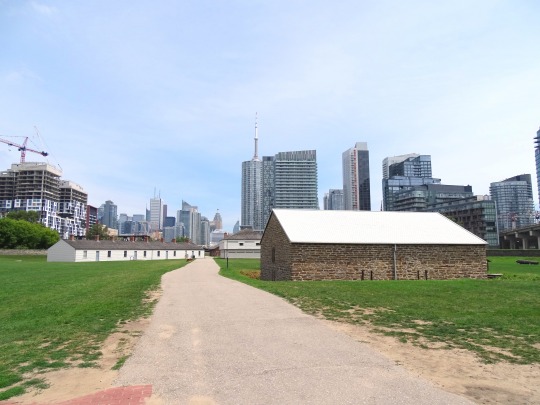

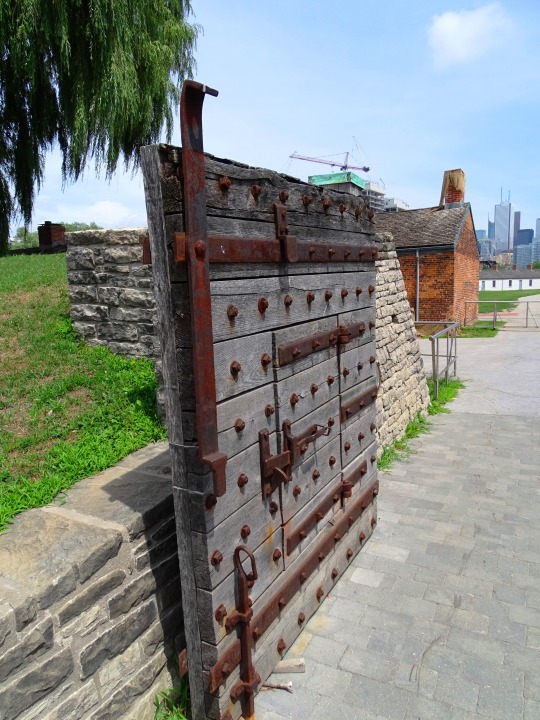
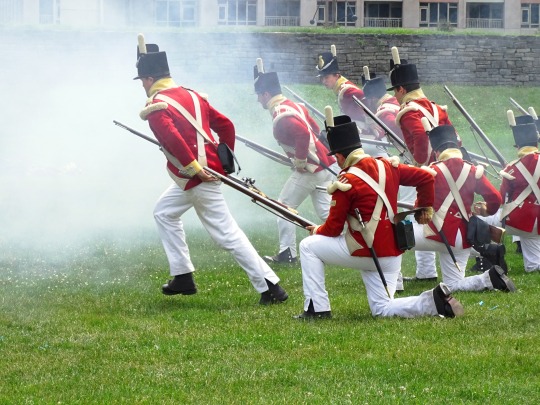






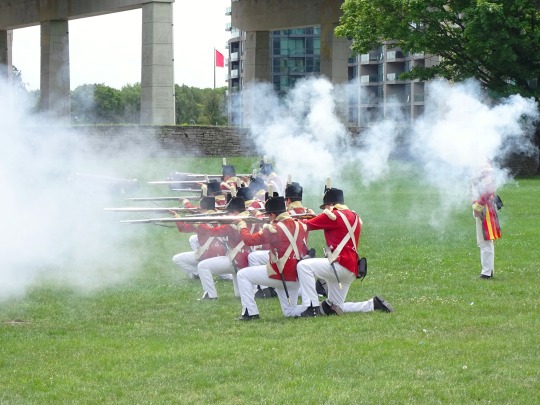








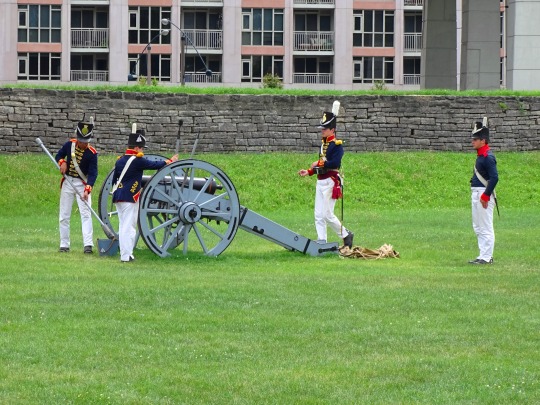
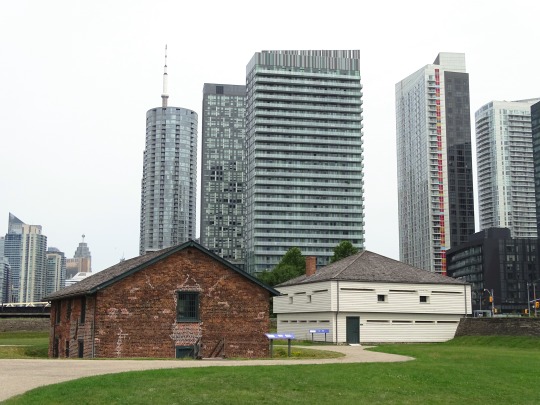


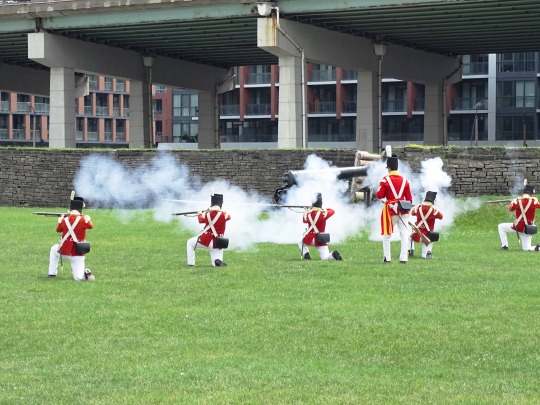
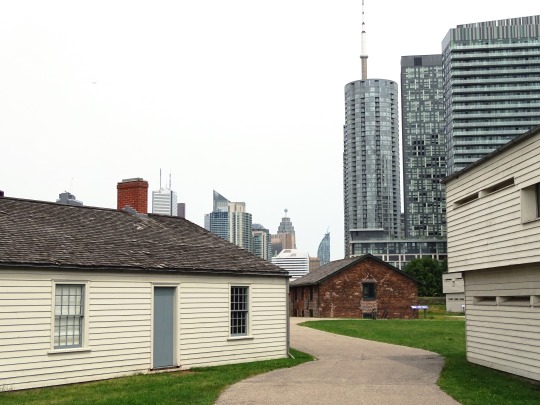



War of 1812: American troops captured York, the capital of Upper Canada, in the Battle of York on April 27, 1813.
#War of 1812#US troops#captured#Fort York National Historic Site of Canada#Battle of York#27 April 1813#original photography#travel#tourist attraction#landmark#museum#cityscape#historical reenactment#architecture#Ontario#summer 2018#Canada#Fort York Squad#Fort York Guard#Fort York Guard Royal Artillery#cannon#barrack#lawn#vacation#anniversary#US history#Canadian history
0 notes
Text
One of the many Murat-related side-projects I've been meaning to get to for a while now, has been to put together a decent estimate of how much time Joachim & Caroline Murat spent apart, for one reason or another, during their fifteen years of marriage. I finally made myself sit down and do the work, and it was honestly pretty eye-opening. Using four different biographies, I was able to find pretty exact dates from when one or the other left for a long period of time--whether one of the numerous military campaigns in which Murat participated, one of Caroline's extended stays in Paris during their reign in Naples, or any other reason they were apart for more than a week or so at a time.
I wouldn't go so far as to try to break this all the way down to the exact number of days or even weeks they spent apart; I was aiming for an idea of roughly how many years and months. I knew it would be years; but I have to admit I was shocked by the final number I came up with.
I calculate that Joachim & Caroline Murat spent approximately 83.5 months apart--or just shy of seven full years--out of a marriage totaling about 15 years and 10 months.
Here's a chart I made, to give their separations a visual representation: the purple blocks are the rough delineations of the times the couple were apart (click the image for higher resolution).

Here is the full list I came up with of their extended absences:
mid-April 1800 - 1 July 1800 (Murat goes to Dijon to take command of the cavalry of the Army of Reserve; Caroline remains in Paris) - ~2 1/2 months
early August - late October 1800 (Murat in charge of organizing/training division of grenadiers/light infantry at camp near Beauvais; Caroline remains in Paris) - ~3 months
23 November 1800 - 6 May 1801 (Murat to Dijon to command Army of Observation; Caroline remains in Paris) - ~5 months
early October 1801 - 4 January 1802 (Caroline returns to Paris while Murat remains in Milan) - ~3 months
early February 1802 - June 1802 (Murat back in Milan while Caroline remains in Paris) - ~4 months
July - August 1803 (Caroline returns to Paris from Milan; Murat joins her a month later)- ~1 month
25 August - late December 1805 (1805 campaign) - ~4 months
9 March - late April 1806 (Murat to Germany to oversee his new Grand Duchy of Berg; Caroline remains in Paris) - ~1 1/2 months
25 July 1806 - mid-July 1807 (Murat back to Dusseldorf and then participating in 1806/1807 campaigns) - ~12 months
late February - 3 July 1808 (Murat sent to take command of French forces in Spain) - ~4 months
mid July - 5 August 1808 (Murat takes the waters & stays for a bit w/ Lannes) - ~1/2 month
21 August - 25 September 1808 (Murat departs for Naples two weeks before Caroline; they reunite on the 25th) - ~1 month
20 November - 4 December 1809 (Murat goes to Paris; Caroline eventually joins him there) -~1/2 month
30 January - 27 March 1810 (Murat returns to Naples while Caroline remains in Paris) - ~2 months
18 April - 3 October 1810 (Caroline remains in Paris after Napoleon's wedding, returning to Naples while Murat is gone on his Sicilian campaign) -~5 1/2 months
26 March - 30 May 1811 (Murat goes to Paris when Napoleon's son is born; Caroline stays in Naples) -~2 months
17 September 1811 - 31 January 1813 (Caroline goes to Paris for an extended stay; Murat remains in Naples; they reunite for one week--5-12 May--before Murat departs for the 1812 campaign) -~17 months
12-29 April 1813 (Murat travels through his southern provinces) -~1/2 month
2 August - 4 November 1813 (1813 campaign) -~3 months
23 January - 2 May 1814 (Murat commands his troops in Bologna; Caroline serves as regent in Naples) -~3 1/2 months
17 March - 15 October 1815 (Murat's final campaign; he returns to Naples in defeat and takes his final departure from Caroline around 9:00 PM on 19 May 1815; he is killed on 15 October.) -~8 months
The biographies I used to pull all of the dates referenced above:
-A. Hilliard Atteridge, Joachim Murat: Marshal of France and King of Naples, 1912
-Florence de Baudus, Caroline Bonaparte: Soeur d'empereur, reine de Naples, 2014
-Joan Bear, Caroline Murat, 1972
-Hubert Cole, The Betrayers, 1972
#I was expecting it to be around four years-ish#I'm floored by these numbers#they spent so much time apart :\#and this isn't even touching on how much time he spent apart from his kids :\\#Joachim Murat#Caroline Murat#Caroline Bonaparte#Napoleonic#19th century#history#Napoleon#Napoleon Bonaparte#timelines#graph#reference
62 notes
·
View notes
Text
A Biography of Marshal Ney (Part 5)
This part marks the end of what is most famous about Ney’s military career - excepting Waterloo, of course. After this, we will get into Ney’s life after Louis XVIII acceded to the Throne of France - not once, but twice. This is where what the Sénat has to write about Ney becomes interesting, as it is more directly connected to the Sénat’s own archives.
By the end of this section of Ney’s biography, although he doesn’t know it, he has less than two years to live.
The original French text for this can be found here:
https://www.senat.fr/evenement/archives/D26/le_marechal_ney/sous_lempire.html
The campaigns in Germany and France (1813-1814)
Ney's stay in Paris, and later on at Les Coudreaux, was of short duration. A new coalition against France rapidly re-formed in 1813. Ney took command of the First Corps, known as the "Rhine Observation Corps", which then became the Third Corps; however, he was among those who were sceptical about the outcome of this new campaign. Napoleon refused to sign a peace treaty, as some were urging him to do.
Nevertheless, there were victories: Lützen on 2 May, Bautzen on 21 May 1813. During the battle Bautzen, Ney seems to have commanded rather badly, poorly coordinating his numerous divisions.
Exhilarated by his victories, Napoleon stubbornly rejected a long-awaited peace. He won his last great victory at Dresden on 26 and 27 August 1813. After that, there was one setback after the other: Katzbach for Macdonald, Dennewitz for Ney on 5 September, Leipzig on 15 October... Ney was wounded and had to return to France. He therefore did not take part in the withdrawal from Germany.
The way to France was opened to the Allies who entered Paris on 31 March 1814. On April 2, the Senate pronounced the deposition of the Emperor. The Campagne de France had been brief - from 27 January to 6 April 1814, the date of Napoleon's unconditional abdication. Marshal Ney made a major contribution to the abdication by insisting that the army would not crush the Allies in Paris, as Napoleon had envisioned.
8 notes
·
View notes
Text
Who is the worst founding father?
Round 2: Robert Livingston vs George Mason

Robert Robert Livingston (November 27, 1746 (Old Style November 16) – February 26, 1813) was an American lawyer, politician, and diplomat from New York, as well as a Founding Father of the United States. He was known as "The Chancellor" after the high New York state legal office he held for 25 years. He was a member of the Committee of Five that drafted the Declaration of Independence, along with Thomas Jefferson, Benjamin Franklin, John Adams, and Roger Sherman. Livingston administered the oath of office to George Washington when he assumed the presidency April 30, 1789. Livingston was also elected as a member of the American Philosophical Society in 1801.
Livingston, a member of a large and prominent family, was known for continually quarreling with his relatives.
In 1789, Livingston joined the Jeffersonian Republicans (later known as the Democratic-Republicans), forming an uneasy alliance with his previous rival George Clinton and Aaron Burr, then a political newcomer. Livingston opposed the Jay Treaty and other initiatives of the Federalist Party, founded and led by his former colleagues Alexander Hamilton and John Jay. He ran for governor of New York as a Democratic-Republican, unsuccessfully challenging incumbent governor John Jay in the 1798 election.
George Mason (December 11, 1725 [O.S. November 30, 1725] – October 7, 1792) was an American planter, politician, Founding Father, and delegate to the U.S. Constitutional Convention of 1787, one of three delegates present who refused to sign the Constitution. His writings, including substantial portions of the Fairfax Resolves of 1774, the Virginia Declaration of Rights of 1776, and his Objections to this Constitution of Government (1787) opposing ratification, have exercised a significant influence on American political thought and events. The Virginia Declaration of Rights, which Mason principally authored, served as a basis for the United States Bill of Rights, of which he has been deemed a father.
Mason prepared the first draft of the Virginia Declaration of Rights in 1776, and his words formed much of the text adopted by the final Revolutionary Virginia Convention. He also wrote a constitution for the state; Thomas Jefferson and others sought to have the convention adopt their ideas, but they found that Mason's version could not be stopped. During the American Revolutionary War, Mason was a member of the powerful House of Delegates of the Virginia General Assembly, but to the irritation of Washington and others, he refused to serve in the Continental Congress in Philadelphia, citing health and family commitments.
Mason routinely spoke out against slavery, even before America's independence. In 1773, he wrote that slavery was "that slow Poison, which is daily contaminating the Minds & Morals of our People. Every Gentlemen here is born a petty Tyrant." In 1774, he advocated ending the international slave trade.
However, Mason owned many slaves. In Fairfax County, only George Washington owned more, and Mason is not known to have freed any, even in his March 1773 will ultimately transcribed into the Fairfax County probate records in October 1792 (the original was then lost).
#founding father bracket#worst founding father#founding fathers#brackets#polls#amrev#robert livingston#george mason
6 notes
·
View notes
Note
hi, i wanted to ask if you know how long the hms briton stayed in rio in march 1814? also, when fitzjames left rio for the uk since he was baptized there in february 1815. maybe he went with his father in 1814? basically i'm wondering if there's any chance that a certain 16-year-old midshipman might've seen a certain toddler, perhaps with a certain portugese woman and/or a certain british official?
i love this ask. thank you for your dedication to historical details! :D
the answer depends on what type of canon you choose to adhere to. in 2011, jfj’s biographer william battersby published a correction claiming that contrary to what he had written in his 2010 book, jfj was born in england (possibly devon), not brazil. jfj could still have had portuguese roots, but he wasn't born there.
however, if you adhere to show!canon, whose james is based on battersby's book, then jfj was indeed born in rio on 27 july 1813. his father james gambier served as british consul-general in rio until april 1814 and returned to england on august 1814 with james in tow.
note that “returned to england” is ambiguous on whether it means leaving rio for england in august, or arriving in england in august. sea travel from brazil to england took at least 46 days in that period (pls don’t ask me for my calculations), so we can comfortably say that gambier and jfj left rio sometime between june and august 1814.
(in reality, gambier returned to england as early as 1811 and stayed there til 1815.)
as to the briton, it arrived in rio on 20 march 1814. the briton’s next destination was tierra del fuego, which it reached on 3 may 1814 after facing “contrary winds”.
that’s 44 days between arriving in rio and in tierra. tierra is only 3 nautical miles from rio, which would have taken the briton, like, an hour of sailing. even with bad weather, it would only have been delayed at sea for two days or so. this leads me to think that the briton stayed in rio for at least 40 days.
so, our hypothetical timeline would be:
27 july 1813 - jfj is born in rio
20 march 1814 - frmc arrives in rio
29 april 1814 - frmc leaves rio
17 june - 31 aug 1814 - jfj leaves rio
could baby frmc have come across an even babier jfj in the docks? no. could they have come across each other at any point in the 40 days that the briton stayed in rio, 8 of which was allowed for sightseeing? yes.
thanks for the ask and for giving me an excuse to nerd out. it only took me 3 hrs to answer. cheers!
#francis crozier#james fitzjames#fitzier#the terror#i am but an armchair historian pls tell me if there are errors!#ask#anon#frmc#jfj#thoughts
42 notes
·
View notes
Text
Brief timeline for the story of Murat and Eugène in Italy
Pinned for now until we get a better one. Just some random dates to give context. To be expanded.
***
1812
December 5: Napoleon leaves what remains of the Grande Armée at Smorgoni, giving superior command to Joachim Murat. Eugène begs Napoleon to be allowed to leave for Italy because there is so much bad blood between him and Murat, but is told to stay and do his duty
The Grande Armée then completely breaks down and dissolves, the retreat turns into a flight without order or organisation
1813
January 17, Posen (Poland): Having asked for permission to go to Naples twice and never having received a reply, Murat decides to leave the army. He summons Eugène and hands over superior command to him – or tries to, because Eugène refuses to accept it from him, if Napoleon has not consented to it. It’s only on Berthier’s insistance that he takes over command provisionally (letters by Eugène from January 17).
As Eugène later writes to his wife: »This devil of a king of Naples now has left me with this great burden.« He also asks her to inform herself if Murat really had passed through Milan - »because to us he said he was ill and would go to Kassel to cure himself! Not bad for a sick man to pass the Alps and make the trip to Naples in one leg!« - In other words, he’s really mad at Murat.
January 27, Paris: An article of »Le Moniteur«, France’s main newspaper, states that »The King of Naples, being indisposed, had to leave the command of the army, which he handed over to the Viceroy. The latter is more accustomed to large-scale administration. He has the full confidence of the Emperor.« This wounds Murat deeply.
A letter from Napoleon to Caroline further widens the gap between Napoleon and Murat
In Germany, Eugène desperately tries to reorganize what is left of the army but can only conceed territory for time, while Napoleon builds a new army in France
Spring and summer: Murat in Naples starts talks with both Austrian (Mier) and British (Bentinck) diplomats. (Letters from that period)
April: Napoleon returns to Germany with a fresh army and joins forces with Eugène’s.
May 2: Battle of Lützen. (Death of Bessières)
May 12: Eugène, exhausted and despirited, is allowed to return to Milan. Last time he sees Napoleon.
June 4: Armistice of Pleiswitz between France on one side and Russia and Prussia on the other. Austria remains neutral and declares herself mediator.
June 26: Metternich and Napoleon meet in Dresden for an eight-and-a-half-hours discussion. Metternich tries to explain to Napoleon that in order ro receive peace, he will have to make territorial concessions and give up France’s stranglehold on the rest of Europe. Napoleon refuses but still agrees to peace talks in Prague
July 12 – August 10: Peace congress of Prague (with Caulaincourt as negotiator for France). Ends with an Austrian ultimatum: If Napoleon does not agree to certain concessions, Austria will declare war on France. Napoleon refuses. Austria declares war.
August: Murat leaves Naples, joins the French army in Germany and returns to Napoleon’s side, his talks with Austria are broken off for now
In Upper Italy, Eugène is meanwhile attacked by Austrian forces after having to give up Illyria completely. He retreats to the Adige.
October 8: Bavaria, the largest of Napoleon’s Rhinebund states, joins the Allies. Huge effect on Eugène both practically (direct neighbour state, his northern flank is exposed) and psychologically: The Bavarian king is the father of his beloved wife and a very close friend. Eugène over the next days has to retreat to the Mincio.
October 17 – 19: Battle of Leipzig. Napoleon is soundly defeated and has to retreat behind the Rhine. The Rhinebund dissolves, its member states one by one joining the Allies
End of October/beginning of November: Murat leaves Napoleon (last time he sees him) and returns to Naples. He has to stop in Milan due to having lost his carriages in the mountains. Immediately resumes his talks with Austria, but the British commander in Sicily, Lord Bentinck, now has become hostile towards Murat personally and stalls negotiations
November/December: Napoleon expects Murat to send auxiliary forces to Upper Italy to help Eugène, Murat refuses, arguing his own kingdom is threatened by British forces
November 23: Eugène meets with a secret messager sent by his father-in-law, King Max Joseph of Bavaria, who tries to make him join the Allies and offers him the crown of the Kingdom of Italy. Eugène refuses
December 31: Allied forces cross the Rhine. France will be invaded within the coming weeks
1814
January: Murat signs a treaty with Austria. He now is supposed to move against Napoleon’s remaining forces in the Italian peninsula: Miollis in Rome, Elisa in Tuscany, Borghese in Piedmont and Eugène in the Kingdom of Italy (Lombardy). Eugène, who has been Napoleon’s main lieutenant in Italy for years, being the main opponent
January 16: Austrian envoy Count Mier returns to Naples and adresses the situation at court and Murat’s disposition
January/February: Neapolitan troops slowly move north through the Italian peninsula. As Murat has not officially declared himself an enemy yet, in the beginning they are even invited in by the French and receive weapons and support from their depots. But the ways they act rouse more and more suspicion.
January 14: Eugène writes a letter to Murat, basically asking: so what now, you with us or against us? Murat answers: … well, I’m not sure … I guess against you … kinda … but tell Napoleon I love him, okay? - Eugène: WTF? (They keep exchanging letters of that kind until March.)
January 17: Napoleon for the first time acknowledges to Eugène that Murat has jumped ship
Murat goes to Bologna to join his troops. His new Austrian and British allies are more and more weary of him as he does not seem to be willing to attack Eugène’s Italy-French forces
February 8: Napoleon improvises a plan to evacuate Italy and leave the whole country to Murat, he wants all forces back in France for a final struggle against the invading allies
February 16 - 19: Eugène refuses to follow Napoleon’s order to return to France, arguing that Murat has not even attacked him yet, and complains to Napoleon about his lack of trust.
February 26: On learning that Murat’s treaty with the Allies has not been ratified yet, Napoleon immediately orders Joseph to write to Murat and to get him back onto Napoleon’s side (Joseph writes his letter on February 28)
March 1: After yet another secret meeting between one of his officers and Murat, an exasperated Eugène sends a “note of proposals” to Napoleon - with conditions under which Murat would be ready to return to attack the Austrians; Eugène declares he is “in fact communicating this ridiculous piece only to give [Napoleon] a fair idea of the delirium that has taken hold of the king’s head“. To his wife he calls Murat “decidedly nuts“ (letters to be found at the end of this post).
March 7: Murat attacks Eugène’s Italians in Reggio but seems to have retreated again almost immediately, leading to yet another fallout with Austrian commander Bellegarde and a long letter of excuses
March 12: After receiving a letter from Murat, assuring Napoleon of his love and devotion and basically begging for forgiveness, and Murat’s conditions for his return into the French camp, Napoleon orders Eugène to betray Murat: Promise him whatever he wants, just so he returns to our side; we do not have to keep promises with that one.
March 23: Negotiations between Eugène and Murat about the division of Italy are broken off / postponed by one infuriated viceroy
March 31: The Allied forces occupy Paris
April 6: Napoleon abdicates as both Emperor of the French and King of Italy (Eugène’s position and powers of viceroy thus seize to exist)
April 16: Military convention between Eugène and Bellegarde, the commander of the Austrian forces. All French forces return home. Eugène calls on the Senate in Milan to install him as King of (Upper) Italy/Lombardy. Uprising in Milan by Italian partisans (general Pino among them), the minister of finances, Prina, gets tortured to death.
April 23/4: Second military convention between Eugène and Bellegarde. Eugène hands over the remnants of the Kingdom of Italy to Austria and leaves with his family for Munich
-
Random story: Somewhen in between, on April 13, Auguste, Eugène’s wife, now suddenly only a »Madame de Beauharnais« without title, had born her fifth child in Mantua (spoiler alert: it was daughter no. 4). According to an anecdote, Eugène, as was custom, had a certain number of salute shots fired at the birth of a little Imperial princess. On hearing that, Austrian commander Bellegarde answered with a salute of his own – after all, while Auguste was the wife of the enemy commander, she was also the daughter of an allied king. As a newspaper article stated: »In such chivalrous fashion ended the war in Italy.«
#napoleon#joachim murat#random timeline#eugene de beauharnais#bellegarde#auguste of bavaria#italy 1813#italy1814#helfert murat
23 notes
·
View notes